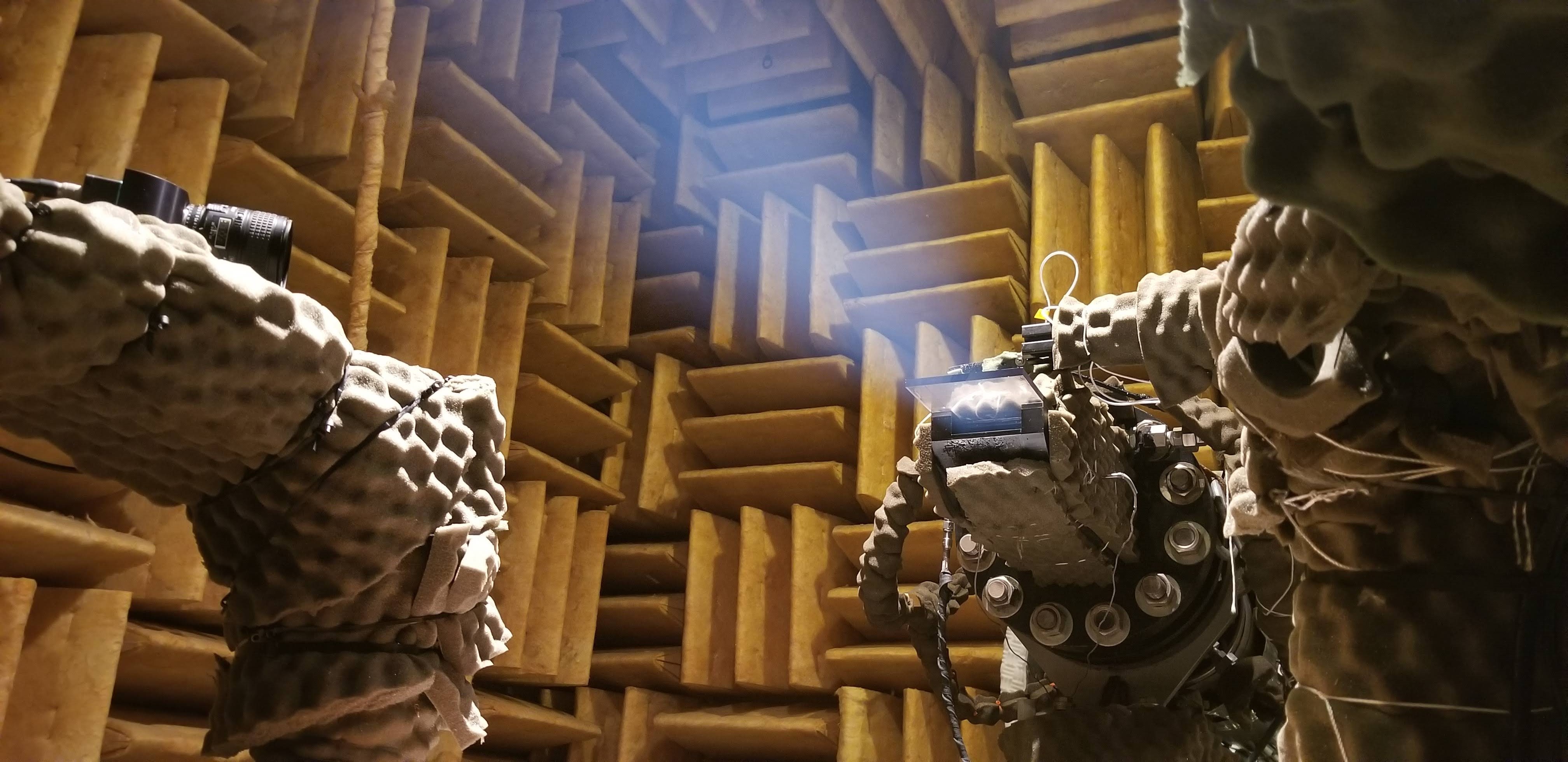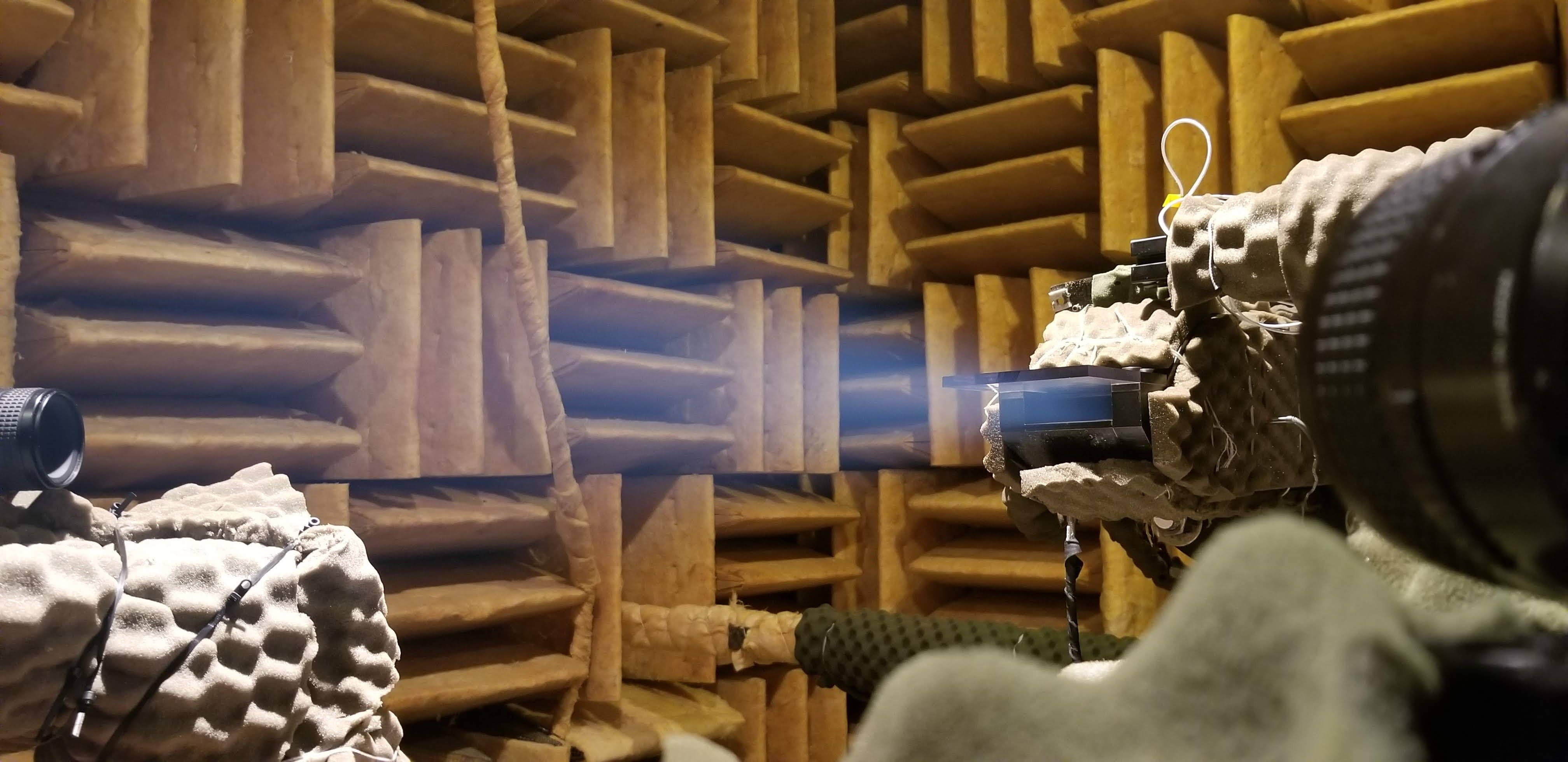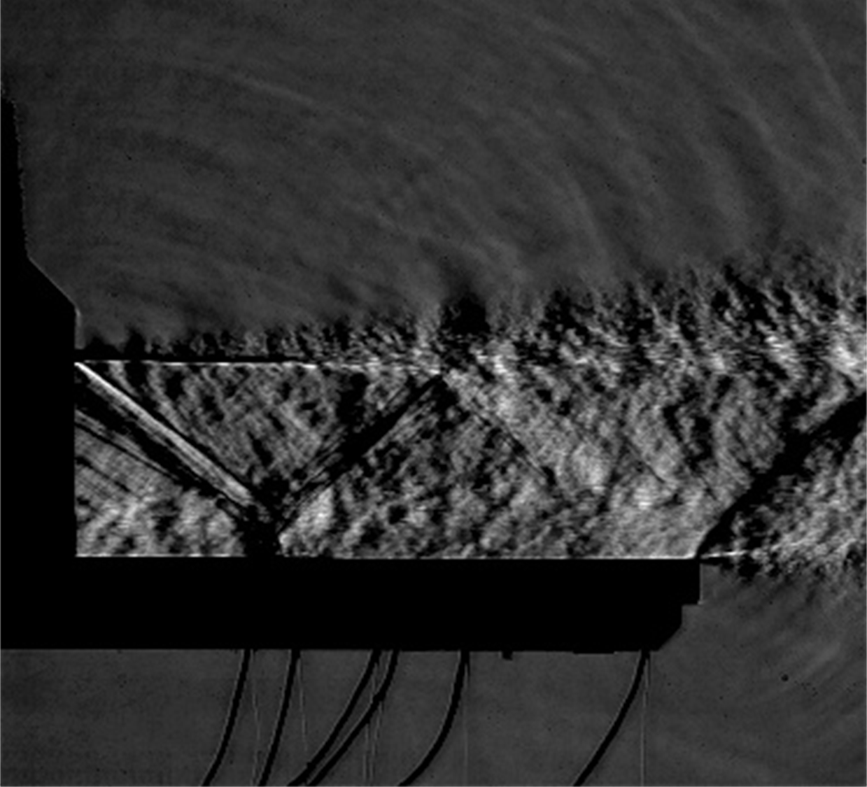Unsteady features of high Reynolds number 3D turbulent flows influence aerospace vehicle design. Unsteady shear/boundary layer interactions dominate these flows which create turbulent phenomena sparking interest in further understanding of these effects. Specifically, a rectangular jet exhausting over a proximal surface while interacting with another rectangular stream is considered. These two canonical flows
create an inner shear layer that exhibits absolute and convective instabilties. Understanding aspects of this complex flow region has been a driving factor of Skytop Labs over the past decade. Utilizing the Syracuse University anechoic chamber facility inconjunction with the Ohio State University, this complex system is currently being simulated and experimented on. Specifically, the students at Syracuse University are exploring the following aspects:




Experimental measurements are performed on a rectangular supersonic multistream jet representing a canonical airframe-integrated variable cycle engine architecture. The flowfield consists of two streams separated by a splitter plate; an (upper) supersonic core stream (Mach = 1.6) expanding through a single-sided expansion ramp nozzle and a (lower) bypass stream (Mach = 1) bounded by an aft deck at the bottom. Spectral Proper Orthogonal Decomposition (SPOD) using experimentally validated Large Eddy Simulation (LES) data indicates that the splitter plate is a highly sensitive region that remarkably alters the dynamics of the flow downstream of the trailing edge due to a two dimensional von Kármán-like shedding instability. This instability is shown to be potentially responsible for impairing the effectiveness of the bypass stream as a thermal and acoustic barrier between the core jet and the aft deck, and also to be exhibiting a global influence on the flow due to interaction with the shock train. To reduce these deleterious effects, the eigenspectrum obtained from linear stability is probed for unstable spanwise periodic disturbances and used to inspire surface modifications to the splitter plate trailing edge. The proposed chevron-like modifications are being tested both computationally and experimentally for their ability to excite three-dimensional instabilities in order to significantly reduce the growth of energy in the two-dimensional von Kármán shedding. From this, their ability for passive flow control is assessed.
